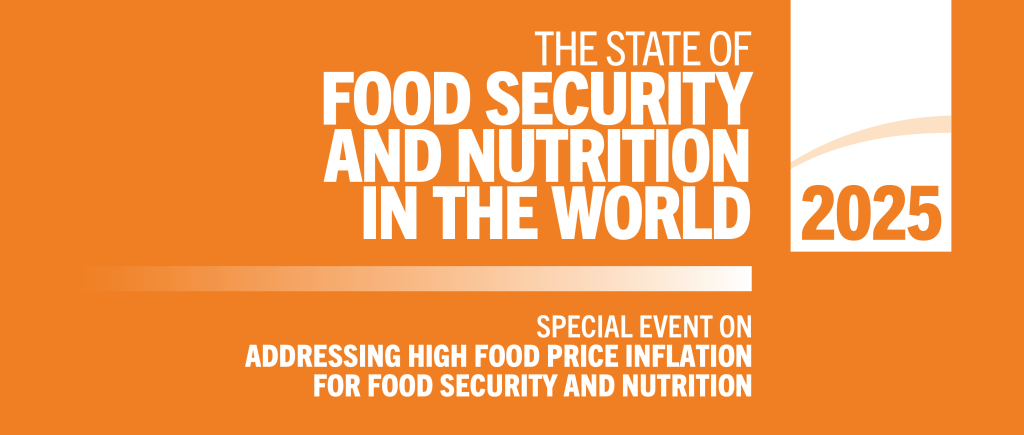SYLLABUS
GS-2: Issues relating to poverty and hunger.
GS-3: Issues of buffer stocks and food security
Context: Recently, The State of Food Security and Nutrition in the World 2025 highlighted that India has the highest rate of wasting in the world.
More on the News
• The report was launched during the Second UN Food Systems Summit Stocktake (UNFSS+4) in Addis Ababa, SOFI 2025.
The State of Food Security and Nutrition in the World 2025
• SOFI 2025 presents the latest data and analysis on hunger, food security and nutrition worldwide, including updated estimates on the cost and affordability of healthy diets.
• This report is the annual global monitoring report for Sustainable Development Goal (SDG) 2 targets
• The report was jointly prepared by:
- Food and Agriculture Organisation (FAO)
- International Fund for Agricultural Development (IFAD)
- United Nations Children’s Fund (UNICEF)
- World Food Programme (WFP)
- World Health Organisation (WHO)
Key highlights of the Report
Global Hunger and Food Insecurity Trends
• Hunger affected 8.2% of the global population (673 million people), declining from 8.5% in 2023.
• Declines observed in South-eastern Asia, Southern Asia, South America but hunger rose in Africa and Western Asia.
• Regional data:
- Africa: 307 million (20.2%)
- Asia: 323 million (6.7%)
- Latin America & Caribbean: 34 million (5.1%)
• Projected Hunger (2030): 512 million people, 60% in Africa.
Food Affordability
• Food Insecurity Prevalence: Around 2.3 billion people (28% of the global population) experienced moderate or severe food insecurity in 2024.
• The cost of a healthy diet increased to $4.46 (PPP) per person per day in 2024.
• Affordability Trends: The number of people unable to afford a healthy diet declined globally from 2.76 billion (2019) to 2.60 billion (2024).
Child and Women Nutrition Indicators
• Child stunting declined from 26.4% (2012) to 23.2% (2024).
• Child wasting remained stable at 6.6%.
• Exclusive breastfeeding improved to 47.8% in 2023.
• Anaemia in women (15–49 years) increased from 27.6% to 30.7% (2012–2023).
• Adult obesity rose from 12.1% to 15.8%.
• Minimum dietary diversity was met by one-third of children (6–23 months) and two-thirds of women.
India’s Profile in SOFI 2025
| Indicator | India’s Status |
| Wasting (Children <5 years) | About 18.7% (more than 21 million children) in 2024, which is the highest in the world |
| Stunting (Children <5 years) | About 37.4 million children under five are stunted, indicating chronic undernutrition |
| Anaemia (Women 15–49 years) | About 53.7% (203 million women) were anaemic in 2023.· India had the highest prevalence, and globally, it ranked fourth — only behind the African nations of Gabon, Mali and Mauritania. |
| Undernourishment | In 2024, over 172 million people in India — 12% of the population — were undernourished.· While India ranked 48th out of 204 countries globally, it had the 7th highest proportion of undernourished people in Asia, after Syria, Afghanistan, Timor-Leste, Pakistan, Iraq, and Jordan. |
| Healthy Diet Inaccessibility | In 2024, 42.9 per cent of India’s population could not afford a healthy diet.· The report noted a steady rise in the cost of a healthy diet in India — from $2.77 PPP (in purchasing power parity) per person per day in 2017 to $4.07 in 2024. |
| Overweight Children | Increased from 2.7 million (2012) to 4.2 million (2024) |
| Obese Adults | Increased from 33.6 million (2012) to 71.4 million (2024) |
Source:


